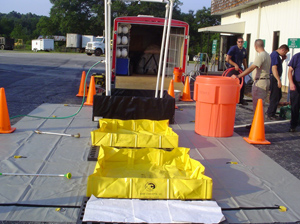Hazardous Incident Response Team
 |
 |
MISSION
It is the mission of the Pickens County Hazardous Incident Response Team to provide the highest level of protection to the citizens of Pickens County, SC from chemical and radiological releases by providing planning, training, and operational assistance to emergency responders.
HISTORY
The Pickens County Hazardous Incident Response Team consists of members from county and municipal fire departments, rescue squads, medical services, specialized industry and law enforcement agencies throughout Pickens County, South Carolina. These 30 individuals are dedicated to serving our county, by volunteering their time in training and preparing for emergencies. The PCHIRT was created under the Pickens County Emergency Management Office, to assist all emergency service agencies in Pickens County, when managing hazardous materials incidents.
Through the years, with support from the Local Emergency Planning Committee and other community partners, the PCHIRT has expanded its capabilities by adding additional response equipment. Recently the county was able to place a dedicated hazmat response vehicle in service. This vehicle is equipped with many different levels of capability, including but not limited to; air monitoring, chemical identification, hazardous spills, decontamination, radiological monitoring, and foam application. This vehicle and team members are also capable of deploying to other counties throughout the state for mutual aid. The main objectives of the PCHIRT are to remove endangered people from a hazardous environment and control/contain a chemical release. Clean-up is not a part of the scope of operation; a third party contractor will be notified to handle the situation after it is under control. All operations of the PCHIRT shall be conducted using safe work practices, by properly trained and equipped members of the team.
SCOPE OF OPERATIONS
The Pickens County Hazardous Incident Response Team will operate with the following priorities:
1. Safety of everyone involved.
2. Rescue of persons imminently endangered by the release of hazardous materials.
3. Support the incident commander by acting as a resource, to provide technical information about the material that is posing a threat to the community.
4. Identify and execute a plan to stop or control the release of a hazardous material, if it is posing an immediate threat.